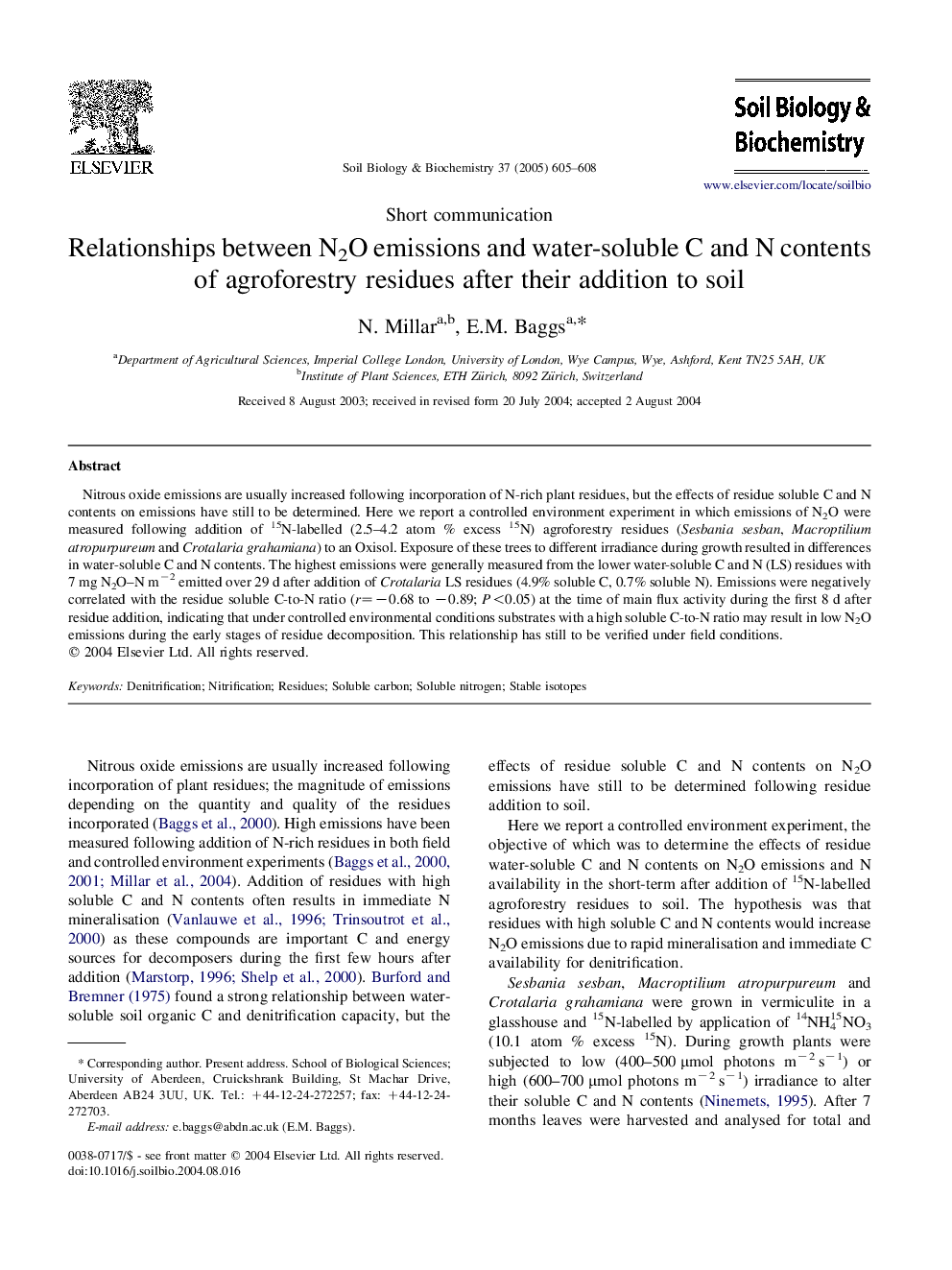| Article ID | Journal | Published Year | Pages | File Type |
|---|---|---|---|---|
| 10846482 | Soil Biology and Biochemistry | 2005 | 4 Pages |
Abstract
Nitrous oxide emissions are usually increased following incorporation of N-rich plant residues, but the effects of residue soluble C and N contents on emissions have still to be determined. Here we report a controlled environment experiment in which emissions of N2O were measured following addition of 15N-labelled (2.5-4.2 atom % excess 15N) agroforestry residues (Sesbania sesban, Macroptilium atropurpureum and Crotalaria grahamiana) to an Oxisol. Exposure of these trees to different irradiance during growth resulted in differences in water-soluble C and N contents. The highest emissions were generally measured from the lower water-soluble C and N (LS) residues with 7Â mg N2O-N mâ2 emitted over 29 d after addition of Crotalaria LS residues (4.9% soluble C, 0.7% soluble N). Emissions were negatively correlated with the residue soluble C-to-N ratio (r=â0.68 to â0.89; P<0.05) at the time of main flux activity during the first 8 d after residue addition, indicating that under controlled environmental conditions substrates with a high soluble C-to-N ratio may result in low N2O emissions during the early stages of residue decomposition. This relationship has still to be verified under field conditions.
Related Topics
Life Sciences
Agricultural and Biological Sciences
Soil Science
Authors
N. Millar, E.M. Baggs,
